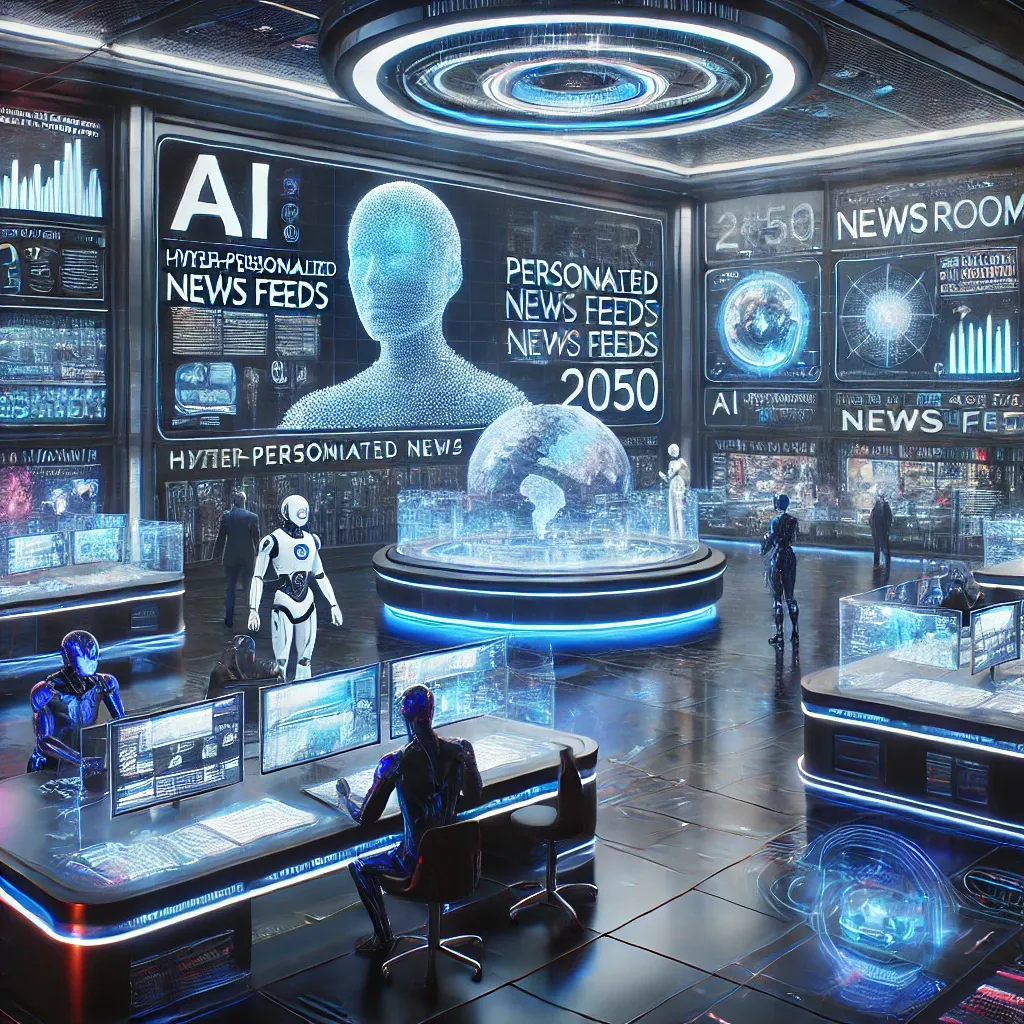
🧠 How AI-generated journalism will reshape how people consume and trust media.
📡 The Shift Is Already Underway
AI is no longer just assisting newsrooms — it’s becoming the newsroom. Major media outlets like Reuters, Bloomberg, and The Associated Press have adopted AI-powered writing tools to generate breaking news stories, financial updates, and sports summaries. With AI able to process massive data sets in seconds and produce content faster than any human reporter, the journalism landscape is poised for a radical transformation.
📰 AI as the New Editor-in-Chief
AI-powered news platforms such as Narrative Science and Jasper AI are already generating data-driven content with minimal human oversight. The rise of AI-driven content curation and personalized newsfeeds means that readers will increasingly consume news that caters to their preferences and biases. However, this hyper-personalization may lead to filter bubbles, where individuals are only exposed to information reinforcing their worldview.
AI-generated journalism also introduces concerns about content authenticity and bias control. AI models rely on existing data to create narratives, so the risk of amplifying misinformation or producing unverified stories remains high. Regulatory frameworks will likely emerge as governments and media organizations grapple with the ethical implications of AI-curated information.
📣 Impact on Trust and Media Credibility
AI’s role in news creation raises critical questions about media trust and public perception. Studies show that while AI-generated content can be factually accurate, audiences trust human-written stories more. As AI plays a more significant role in shaping public opinion, media literacy and transparency will become essential to maintaining trust. Future innovations may include AI content verification systems that cross-check facts before stories go live.
⚡️ Hyper-Personalized Media Ecosystems
Imagine a future where your morning newsfeed is curated and explicitly generated for you based on your interests, behavior, and geographic location. AI-driven news aggregators could tailor daily reports with a blend of local, national, and global content — all optimized to keep readers engaged. While this level of personalization could increase audience retention, it also risks narrowing perspectives and fostering digital echo chambers.
💡 What This Means for Business
1. Content Automation Saves Resources:
Small businesses can leverage AI-generated content tools to produce press releases, newsletters, and blog posts faster and with fewer resources.
2. Hyper-Personalized Marketing Potential:
Businesses can analyze AI-generated data to understand their audience’s preferences and fine-tune their marketing strategies with highly targeted messaging.
3. Media Trust Impacts Brand Perception:
Companies that align their brand with transparent, credible content will stand out in an era where AI-generated media risks undermining public trust.
4. Fact-Checking Tools as a Competitive Advantage:
Businesses that deploy AI verification systems can safeguard their reputation and prevent the spread of misinformation that could harm their credibility.
🎯 Final Thought:
The AI-driven news revolution is set to redefine media consumption and trust over the next 25 years. While the opportunities for automation and personalization are immense, businesses that navigate this trend responsibly will be best positioned to thrive in an AI-powered media landscape.
The Team At WBN News Global
What Is A Megatrend? See Video Here:
Tags: #AI in Media #Future Of News #Mega Trends 2050 #AI Content #Media Disruption #Business Insights
